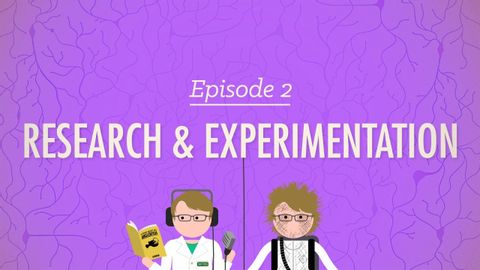
Subtitles & vocabulary
Psychological Research - Crash Course Psychology #2
00
Jack posted on 2015/07/26Save
Video vocabulary
psychological
US /ˌsaɪkəˈlɑdʒɪkəl/
・
UK /ˌsaɪkəˈlɒdʒɪkl/
- Adjective
- Concerning the study of the mind
- Relating to or involving the use of propaganda, threats, or other psychological techniques to subdue an opponent.
A2
More experiment
US /ɪkˈspɛrəmənt/
・
UK /ɪk'sperɪmənt/
- Noun (Countable/Uncountable)
- Test performed to assess new ideas or theories
- A course of action tentatively adopted without being sure of the eventual outcome.
- Verb (Transitive/Intransitive)
- To create and perform tests to research something
- To try something new that you haven't tried before
A2TOEIC
More effect
US /ɪˈfɛkt/
・
UK /ɪ'fekt/
- Noun (Countable/Uncountable)
- An advantage, benefit
- Change brought about by a cause; result
- Transitive Verb
- To cause (something) to happen; bring about.
A1TOEIC
More question
US /ˈkwɛstʃən/
・
UK /'kwestʃən/
- Transitive Verb
- To ask for or try to get information
- To have or express concerns or uncertainty
- Noun (Countable/Uncountable)
- Issue or problems you are dealing with
- A sentence worded or expressed so as to elicit information.
A1
More Use Energy
Unlock All Vocabulary
Unlock pronunciation, explanations, and filters
